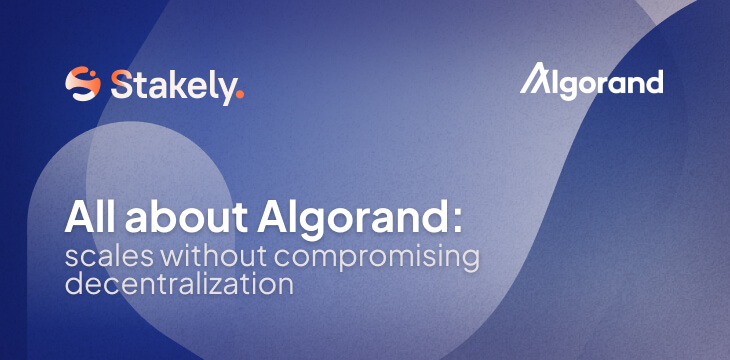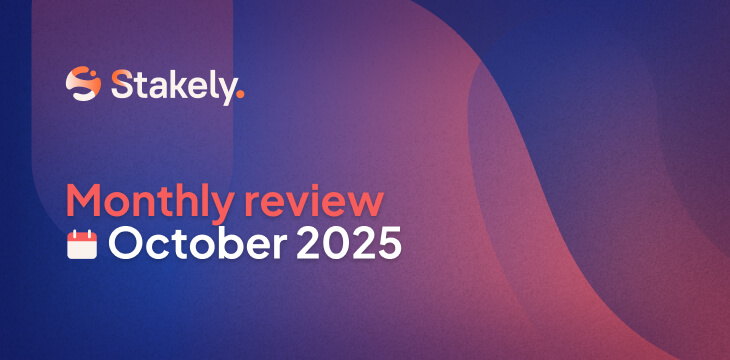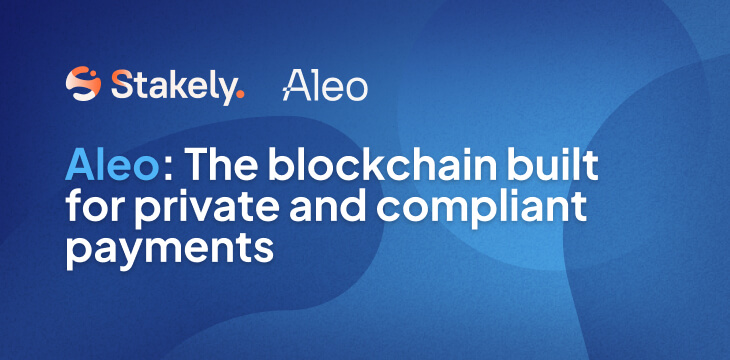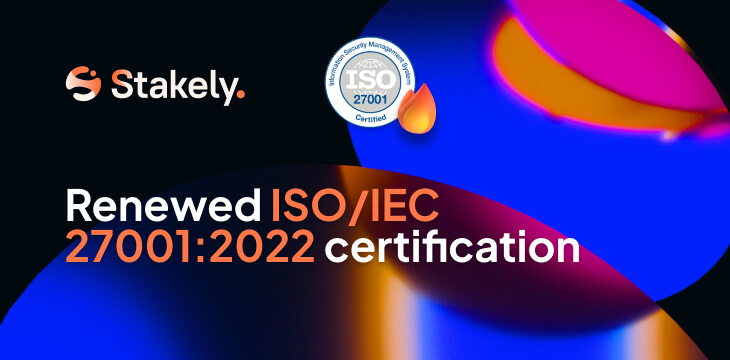What is Algorand? The blockchain designed to scale without compromising decentralization

If you’ve been in the crypto ecosystem for a while, you’ve surely heard of the famous trilemma: decentralization, security, and scalability — elements that rarely coexist in perfect harmony. Algorand tackles this challenge with its Pure Proof of Stake (PPoS) model, aiming for fast finality, low fees, and open participation, without locking out validators or delegators.
In this article, we’ll dive into its architecture, how its consensus operates, its economic model, concrete benefits for delegators, real-world use cases, and why Stakely has joined as a validator on Algorand’s mainnet.
What is Algorand and who’s behind the project?
Algorand is a public, permissionless layer-1 blockchain, conceptualized in 2017 by Silvio Micali, MIT professor and Turing Award winner, and launched on mainnet in 2019. The protocol is developed by Algorand Inc., while the Algorand Foundation manages governance, ecosystem growth, and incentive structures.
From a technical standpoint, Algorand integrates its Algorand Virtual Machine (AVM) for smart contracts, using the Transaction Execution Approval Language (TEAL). It supports stateful/stateless accounts, native assets called ASA (Algorand Standard Assets), and is built for fast finality and efficient operations.
The native token ALGO serves as the economic backbone: it covers transaction fees, enables participation in consensus, powers on-chain governance, and supports the issuance and management of ASA assets. The max supply is capped at 10,000,000,000 ALGO.
Architecture and technical operation of Algorand
To truly understand how Algorand works, it’s helpful to separate two layers: the consensus mechanism and the layer-1 infrastructure.
1. Consensus mechanism: Pure Proof of Stake (PPoS)
Algorand does not rely on mining. Its PPoS mechanism selects validation committees proportionally to the stake via a Verifiable Random Function (VRF). Each node privately self-selects and only reveals its role when voting, which reduces exposure to targeted attacks.
In each block round, a leader is chosen to propose the block, and a voting committee certifies it. If an honest supermajority votes, the block becomes irreversible (“finality”) and no fork is created. This mechanism allows any ALGO holder to participate, with the probability of selection proportional to their stake.
2. L1 infrastructure: performance and scalability
This is a layer-1 blockchain where smart contracts run natively on the network through the AVM, executing contracts written in Transaction Execution Approval Language (TEAL). It natively supports Algorand Standard Assets for token issuance and provides official SDKs in Python, JavaScript/TypeScript, and Go.
In practice, you’ll see blocks every ~2.8 seconds with immediate finality, and public tests have demonstrated up to 10,000 TPS.
Algorand’s advantages and what makes it different
Looking at its practical benefits, Algorand stands out as a fast, secure, and truly participatory network, for both validators, delegators, and companies building on top:
- Immediate finality, no forks: deterministic confirmations and reduced operational risk.
- Fast and scalable: ~3-second blocks and high throughput for payments, tokenization, and dApps.
- PPoS, open participation: any ALGO holder can contribute to the network.
- Energy efficient: no intensive mining, better suited for institutional environments.
- Native contracts and assets on L1: AVM/TEAL and ASAs reduce latency and integration costs.
Algorand use cases and real-world adoption
Algorand is positioning its L1 to power tokenization, payments, data traceability, and digital identity at scale. Here are some real-world examples:
- Payments and digital money: Quantoz Payments’ EURD and HesabPay show instant payments and banking over Algorand.
- DeFi and tokenization: Folks Finance leads the ecosystem with lending, liquid staking, and real on-chain markets.
- Traceability and supply chain: Finboot enables verifiable tracking and audited sustainability of products.
- Identity and humanitarian aid: digital credentials on Algorand streamline fund distribution and secure verification.
- Climate and ESG: Ureca leverages AI and IoT to verify emissions and tokenize globally accessible carbon credits.
- Culture and historical data: Data History Museum records verifiable on-chain events to preserve information integrity.
Algorand, a complete ecosystem for developers
Algorand isn’t just a protocol. It’s surrounded by a robust technical ecosystem, featuring “core” tools built by the team itself — such as AlgoKit, the official toolkit to spin up local networks and deploy dApps, and SDKs in Python, JavaScript/TypeScript, Go, and Java. It also includes a curated directory of third-party services for identity, node access, indexing, and monitoring — all designed to help teams go from idea to production with minimal friction.
Stakely as validator on Algorand mainnet
At Stakely, we don’t just validate on Algorand: we believe in its vision and actively contribute to its infrastructure. We also understand that participating directly as a solo staker can be complex, especially with a minimum requirement of 30,000 ALGO. That’s why we offer a simple and flexible alternative: join our pool from just 1 ALGO, while always keeping custody of your assets, and benefit from our robust infrastructure, 24/7 monitoring, and best operational practices to minimize risks and maximize your contribution to the ecosystem.
Join Algorand today by delegating to our Stakely.algo pool.





